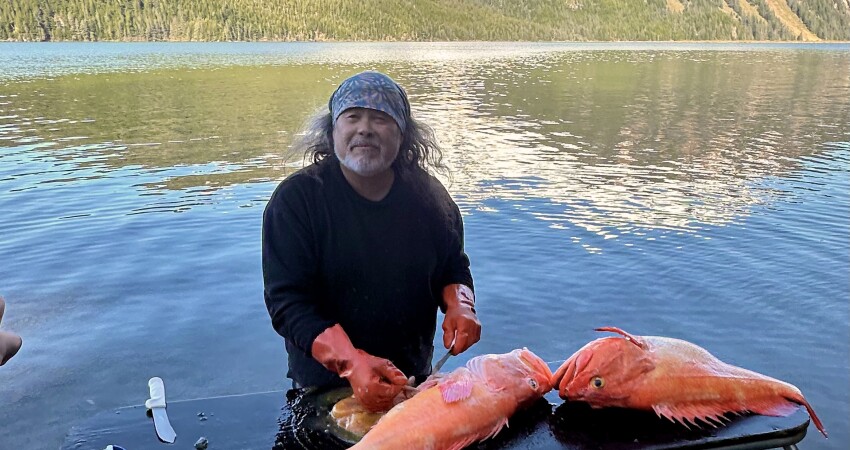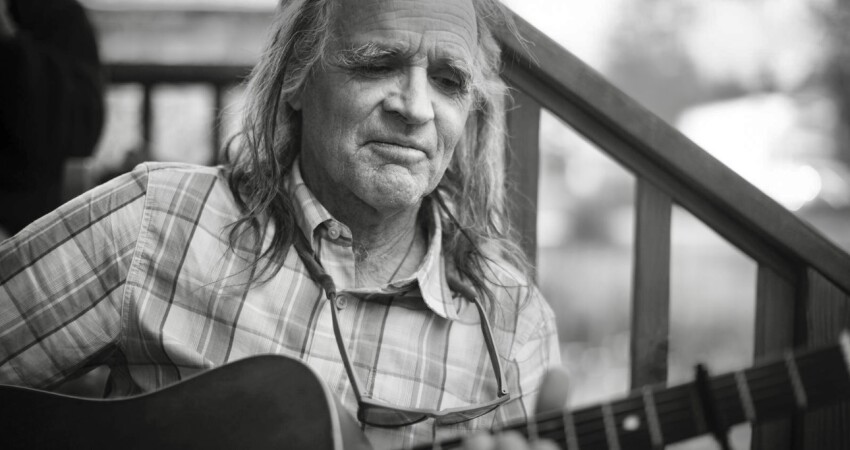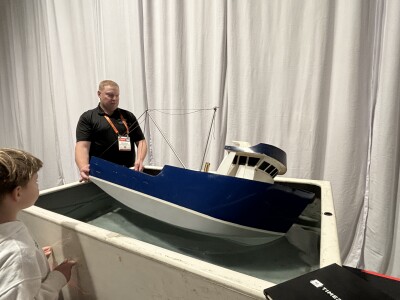Artists for Nature Foundation (ANF) has embarked on a new project in Cordova, in southcentral Alaska's rainforest, to draw attention to the need for protecting and enhancing wild salmon habitat in this abundant bioregion.
Over the next three years, small groups of artists, including some from Alaska, will converge on Cordova in all seasons to create portraits of this region, said David Lynn Grimes, of Cordova, a member of Artists for Nature and participant in the project. They will use painting, printmaking, sculpture, carving, and other fine arts to portray the region's landscapes, ecological diversity, and human activities. Their work will also become part of a book, traveling exhibition, documentary film, social media content, and a RAVE (Rapid Aerial Visual Expedition), he said.
"The project will highlight the beauty and bounty of Prince William Sound and the Copper River Delta," said Dune Lankard, founder and president of the Native Conservancy in Cordova, which is collaborating on the project with ANF. "We want to document the baseline habitat that we have, the fish, the wildlife, the kelp.
"Salmon habitat needs repair and protection," said Lankard. "There are very few salmon runs left on the planet. This is one of the last wild places on the planet where we still have a chance to get something right and I'm absolutely optimistic. I'm a fisherman," he said.
The bioregion itself, which is still recovering from the dual catastrophes of the March 27, 1964 Good Friday earthquake and Exxon Valdez oil spill in Prince William Sound on March 24, 1989, also faces a host of new threats that the project seeks to address, Grimes said.
Central to the project are the salmon culture and the Native Eyak people who have survived and thrived in this coastal rainforest for millennia, he said.
The project is to include vignettes of the ocean world, including salmon, halibut, kelp and herring, as well as sea otters, seals, sea lions, and migratory whales. There will be portraits of glaciers mountain wetlands and rainforest, the world of beavers and swans, eagles and hummingbirds, bears and wolves, wolverines and mountain goats.
Environmental and cultural conservation campaigns regarding Prince William Sound and the Copper River Delta, an area Grimes refers to as "two half of a beating heart," will be highlighted.
"Art is the universal language, as is music," said Grimes, "and I am a music bard." Born and raised in the Ozarks, Grimes first came to Alaska as a firefighter for the Bureau of Land Management in 1975. Then he was offered a summer job with the U.S. Forest Service and stayed.
When the Exxon Valdez oil spill hit, he collaborated with like-minded environmentalists, including Lankard, marine conservation professor Rick Steiner, and marine toxicologist Riki Ott to provide local knowledge to Exxon and the state of Alaska on how to clean up the oil spill.
At the time of the oil spill, clear-cutting timber in Prince William Sound had already begun.
"Salmon are forest animals," said Grimes, who advocates for keeping chainsaws out of forests.
There trees contribute both nutrition and shade to rivers, keeping water temperatures healthy for salmon spawning grounds.
"The art project will promote conservation of the natural resources and the salmon culture to protect salmon rivers," said Grimes. "We would say a wild salmon river is already developed.
What kind of culture do we want here?" The project will also advocate for retirement of the Bering River coal fields on the east side of the Copper River Delta.
"To me it is all about habitat," said Lankard. Alaska Native regional corporations, including Sealaska, in Southeast Alaska, Kodiak Regional Native Corp. on Kodiak Island, and Chugach Alaska Corp., for the Cordova area, are interested in kelp and mariculture because they are regenerative economies that can be built up locally and teach people to be civilian scientists, he said. "The (Native) corporations are realizing they need to take a different view of the oceans. To feed people their traditional food sources you need to protect the habitat. Collectively we have the intelligence, knowledge and experience, but we don't have the courage yet."

ANF was last in Cordova in 1997. Participants produced 5,000 copies of a book about the project which were sold in numerous stores in Alaska and elsewhere. "We used the book to draw attention to the Copper River Delta," Lankard said. They also got copies of the book to then President Bill Clinton and Vice President Al Gore.
The cost of the current project will run to a couple hundred thousand dollars, with some of the money raised by the Native Conservancy though its contacts with dozens of foundations, Lankard said. A major funder is NDN Collective, an indigenous-led organization on Lakota lands in Rapid City, S.D., Grimes said.
The artists will work as volunteers, with the project paying their travel expenses, and the art created will be used as part of the exhibition. Eventually the art will be sold to benefit ANF or become part of the permanent collection in the Netherlands.
The book to be written by Grimes and Lankard about the 2025-2027 project will be a coffee table book, Lankard said. "People need to understand and fathom the beauty and they need to understand and fathom the bounty. We have 27 different runs of wild salmon just in the Sound and the Delta. It is highly prolific and bountiful, but there are still threats that could change the course of our history.
"There has always been a visceral drive to develop, to open up the areas. They wanted the coal, the oil and gas."
Efforts by Grimes and Lankard to preserve the bioregion, now the focus of the ANF project, have long been in the making.
"For years, David Grimes and I have brought people out from all over the world," he said. "We invite artists, musicians, organizers, writers. We bring people out to spread the word about this place and why it deserves permanent protection," Lankard said. "I've been doing this since the oil spill. When people can feel the power of place and abundance they get it."
As for fish hatcheries, Lankard said that in times of hardship on wild runs, hatchery salmon take the pressure off of wild fish, but that this also diminishes the wild DNA. "Everything has to be done in moderation and in sensitivity to what is still wild," he said.
"If there is care and sensitivity in doing things right, we have a chance to do things sustainably.
"As a fisherman, you have to hope the next day, the next year, will always be better. I have always believed change happens if people understand the whole story. I have to show up every day and do what I can, but I think everything I've done is still not enough."







